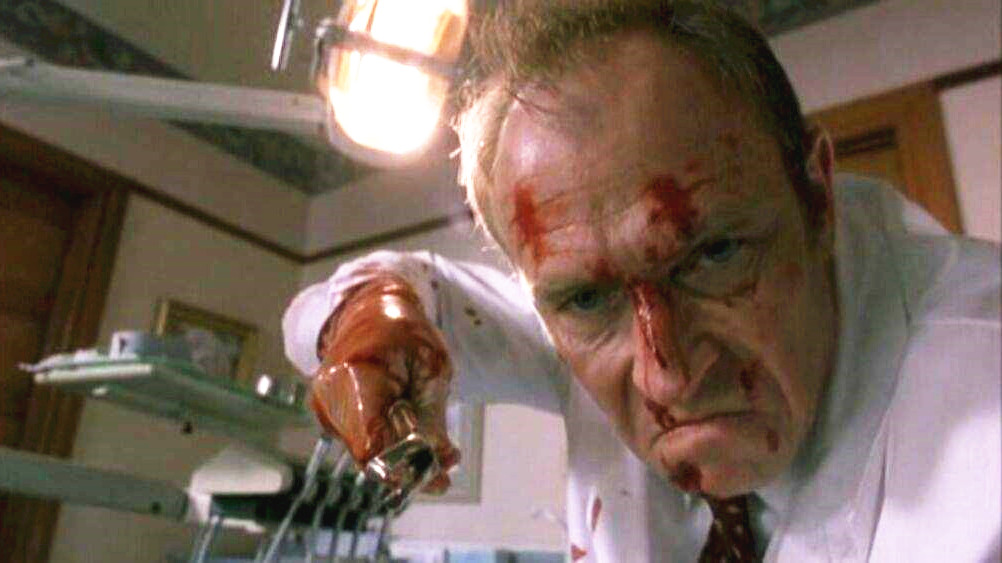
The way we view films is forever changing. In the race to update, to constantly improve our cinematic experience, a great number of very interesting movies get left behind. This is especially true of the horror genre. Narrowing this list down to only ten was a difficult task, as there are so many fascinating older genre entries dwindling in obscurity; above all else, sheer entertainment value was the main consideration.
There are a few genuine classics, a couple of minor gems, and a handful of highly amusing cinematic train-wrecks. We’re going to be digging deep into the video store shelves here, so prepare to come across some fairly rare titles that may require a hunt. Below are ten horror films that, for whatever reason, simply haven’t been given the proper attention.
1. Rituals (1977)
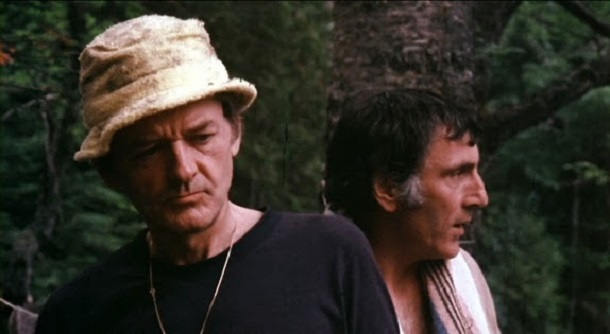
Five medical professionals, close friends since childhood, are slowly picked off by an unknown killer while camping in Northern Ontario in Rituals, by far the most overlooked entry in the “backwoods horror” subgenre.
Directed with steady precision by Peter Carter, Rituals carefully establishes characters that are well-written and beautifully performed by an expert cast (including Hal Holbrook, whose salary was one-sixth of the picture‘s entire budget). We spend time getting to know them before their lives become a living hell, and this makes a huge difference.
Why it’s so scarcely remembered, so hardly spoken of, remains a complete mystery to this day; not merely one of the best of its kind, Rituals stands as one of the best horror films of the 1970‘s. It’s a white-knuckle stunner. Rather than having the main characters hit with a full-on assault right from the outset, Carter leans towards creeping dread, opts for an atmosphere of menace and danger presented with a slow-burn sensibility.
For example: in a stroke of sadistic genius, the unfortunate events begin when all the campers wake up, miles deep in the woods, to realize their shoes have been stolen. They don’t know why, or by whom, but it strips them of a crucial element for survival in such a harsh environment – that‘s effective filmmaking.
In Rituals, the motivation behind these attacks remains as vague to us as it does to the protagonists. The five men just know that someone, or something, is out there; it knows the terrain, it seems to know who they are, and it wants them all dead. Tension gradually mounts to near-unbearable levels as they attempt to survive the harsh wilderness and escape unseen human predators.
Carter shot Rituals in sequence (a highly uncommon practice), and it appears to have paid off as there’s a natural flow to this film, an undeniable authenticity. These five men do, indeed, seem like the best of friends, but in the most realistic way possible; their interrelations are complex, personalities layered. Rituals possesses an undeniable realism, strikes no false notes. It shouldn’t be referred to as simply a ’cult classic‘; Rituals is a classic, period.
2. The Meateater (1979)
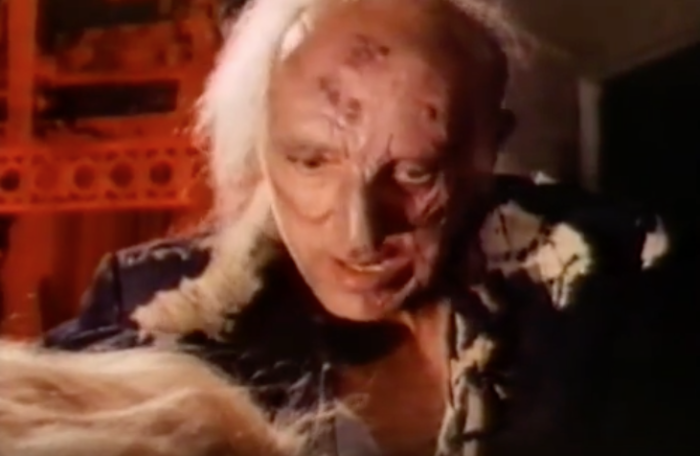
The Meateater feels so creaky and dated that you may find yourself questioning its release date. If the clothing, hairstyles, and film stock are any indication, the picture appears to have been shot several years prior to 1979, if not an entire decade. No one involved with its production had had any experience in filmmaking, and none of them went on to do any further work in the cinematic arena. This does not come as a surprise, as The Meateater is a complete disaster from beginning to end, a case study in cinematic awfulness.
The film stars a man named Peter Spitzer, and how this fellow snagged himself the lead role in anything, even at this level, defies belief. There has maybe never been a more zonked-out onscreen presence; the man is a charisma vacuum, his face like that of a wooden cigar-store Indian. You‘ll be in amazement, and hysterics, every time he opens his mouth. Spitzer portrays Mitford Webster, a suburban husband and father who purchases a crumbling movie theater (or, “thee-ay-turr” as the regional cast pronounces it) for his family to run, intending to screen “wholesome, G-rated movies”.
The Websters are a morally upstanding, all-American bunch and writer/director Derek Savage really wants you to know it, driving the point home with laughable obviousness at every given opportunity; he’s got them singing the Oscar Mayer Weiner song in unison at one point.
Unbeknownst to the Webster clan, there’s a hideous cannibalistic hermit living in the theater’s attic and, naturally, this causes problems. When Mitford finally opens his movie-house to the public (the marquee literally reads “WHOLESOME MOVIE“), the titular carnivore sets about terrorizing both the Websters and their patrons.
Film fans of a particular sort will likely find much to appreciate here – after all, who amongst us wouldn’t want to run their own movie theater in the 70‘s? The setting holds your interest while actors make you laugh with stiff readings of dreadful dialogue (it should be noted that Dianne Davis, who plays Mitford’s wife, is actually fairly good and it’s borderline uncomfortable watching her act alongside Spitzer). Even Savage’s nonexistent blocking and cock-eyed framing evoke guffaws.
Ultra-cheesy, old-fashioned “so-bad-it’s-good” fun that’s awkwardly clumsy to the point of being lovable, The Meateater provides enough unintentional humor and time-capsule curiosity value to make it deserving of “cult classic“ status. As with several films we’ll be exploring on this list, it’s sadly rare and hard to find. No DVD or Blu-ray has ever been released, none forthcoming. Old VHS copies and file sharing are basically the only ways to track this one down.
3. Bloody Moon (1981)
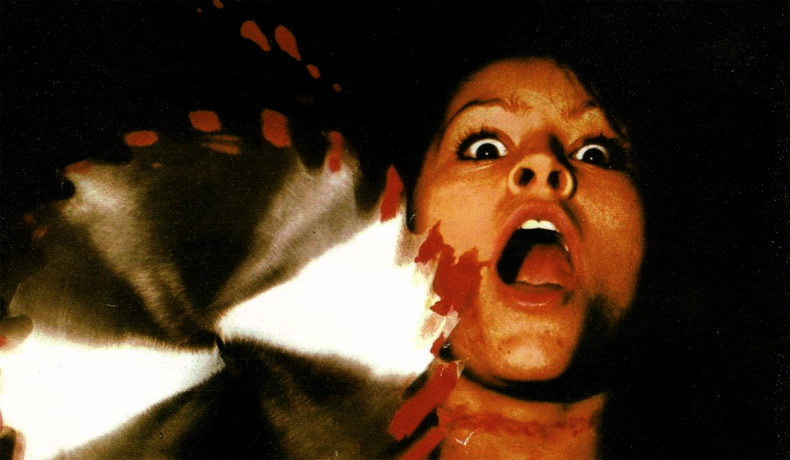
Some filmmakers use the cinematic medium as a form of therapy, almost like mental purging. These artists put their neuroses, their obsessions, their discontent onto film, as though capturing and immortalizing such inner turmoil will render it impotent. Staten Island’s Andy Milligan was one of these, and so is Lloyd Kaufman, to a lesser extent; Spanish auteur Jess Franco is perhaps the king of this particular field.
With over 150 feature films to his name, the insanely prolific Franco spent over half a century churning out a seemingly endless stream of pictures, often working with financing that could graciously be described as, “poverty row”. No budget? No problem. No plot? No script? Only two lights? No lights? One location? With Franco, these were not reasons to cancel his filmmaking plans.
The man had a burning, uncontrollable desire to make movies and let nothing interfere; with him, name recognition or monetary gain were never part of the equation. Franco simply had to make movies. He had no choice. His feverish, deeply personal work certainly isn’t for everyone, as he possessed a very unique (read: sloppy) style that takes a significant amount of getting used to.
But if one takes the time to study the Franco canon, a few titles stand out as being a bit more handsomely produced and technically proficient; these efforts make it clear that Franco, when he calmed down and paced himself, was capable of skillfully crafting a film (albeit in his own extremely skewed fashion). Bloody Moon is the closest Jess ever came to directing a Friday the 13th-esque slasher and it contains some of the man’s finest work.
The film takes place at a boarding school in Spain, where the female students are being murdered by a deformed killer. As was Franco’s preference (read: compulsion), there’s an emphasis on (often deviant) sexuality: voyeurism was a pet theme of his, and it certainly plays a significant part in Bloody Moon. He also tosses in a dash of incest for good measure.
Originally banned in England, the film is indeed brutally violent, far more so than many of the titles it sat amongst on the U.K. ‘Video Nasty’ list. Gruesome effects are abundant and well-achieved, especially for a Franco picture; one bit involving a circular saw will have your jaw on the floor (I guarantee it).
Gerhard Heinz’s dark psychedelic score sounds like Pink Floyd in the seventh circle of Hell. The oddly cheery main title theme will linger in your head for days. Bloody Moon moves at a steady pace and never grows dull, two things that can’t be said about much of Franco’s output. In this author’s opinion, it’s easily his most entertaining effort.
4. Alone in the Dark (1982)
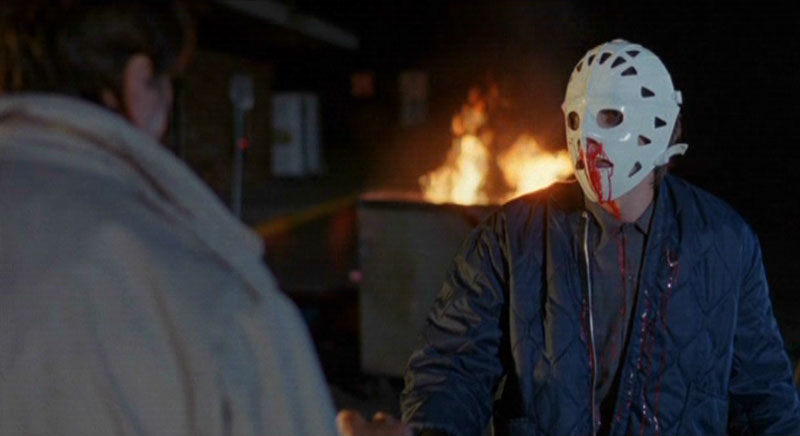
Jack Sholder’s Alone in the Dark takes an ancient premise – the escaped mental patient run amok – and amplifies it, expands on it, raises the stakes. When a citywide blackout allows several institutionalized lunatics (led by Jack Palance and Martin Landau) to break free from their confines, they head straight for the suburban home of their doctor and torment his family over the course of one long evening.
Convinced that their current therapist (Dwight Schultz) murdered their former shrink (Donald Pleasance), the murderous crew sets out to exact revenge and brutally kills all those who interfere.
The newly hired doc must take up arms and defend his family against this band of psychos. Sholder, who would go on to helm Nightmare on Elm Street Part 2 and The Hidden, emerged confidently onto the scene with Alone in the Dark; it didn’t hurt that he had acting stalwarts like Palance, Landau, and Pleasance to lend his debut an excessive amount of gravitas. They’re all excellent, obviously thought this was a clever little film and tried to make it work.
The four escapees have clear, distinct personalities: Palance is a paranoid ex-military type, Landau a fire-and-brimstone preacher, and Edland van Lidth (Dynamo in 1987’s The Running Man) portrays a mountain of a man who likes small girls. Palance and Landau ham it up like nobodies business while Pleasance, as the retired psychiatrist who seems just as crazy as his patients, provides the third point in a scenery-chewing triangle; watching these three legends, who are given ample screen time, do their thing with such reckless abandon is an utter joy.
The first film to be distributed by New Line Cinema, Alone in the Dark was also one of the very first horror pictures to utilize Dolby Surround Sound (at the time, multiple theaters complained about old speaker systems being blown out).
Initially dismissed as another Friday the 13th clone, Alone in the Dark has earned itself a warmer reception with the passing of time; in retrospect, its clearly one of the finest slasher flicks to emerge from that era, handled with an unusually high level of intelligence, wit, and style. Luckily, it’s not impossible to find – a DVD was released in 2005 and YouTube currently has a decent-looking copy available streaming. If you’ve missed this one, get out and correct that.
5. The Boxer’s Omen (1983)
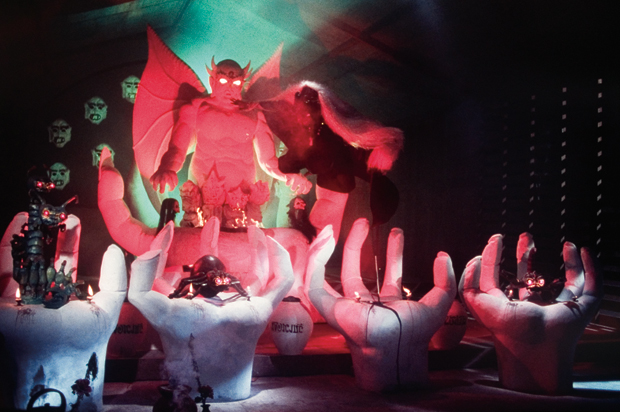
A Hong Kong production company that specialized primarily in kung-fu flicks, Shaw Bros. cranked out nearly 1,000 feature films in less than thirty years. Towards the end, with revenues failing and popularity waning, the production company sought to explore other genres in an attempt to stay afloat.
1983’s The Boxers Omen, one of the wildest motion pictures ever unleashed on the populace, is clearly influenced by popular horror films like The Evil Dead and Phantasm (sound effects from the latter film are even mixed into this one at certain points). The profoundly weird story involves black magic, Buddhism, cannibalism; it follows a kickboxer who journeys to Thailand to avenge the crippling of his brother. En route, he is plagued by bizarre hallucinations and eventually crosses paths with an evil magician. I know this all sounds quite loopy, and it certainly is; this movie is a case of pure sensory overload. N
ot one second passes without something insane happening – wild, vivid gore, stunning in-camera visual effects (including some of the coolest lens flares you’ve ever laid eyes on), tiny creatures and demon beasts brought to life using stop-motion animation and puppetry (everyone loves puppets). It’s a distinctly Asian experience with many references to Oriental mythology and iconography; the harebrained plot is damn near impenetrable so it‘s best to just surrender to this fever dream of a film and accept all the freakish gifts it has to offer.
Far from being a case of slapdash exploitation, Boxer’s Omen boasts masterfully assembled frames and intense kaleidoscopic imagery. Firmly rooted in economical B-movie methodology yet polished and professional, it’s a bona-fide work of art that is guaranteed to set your eyeballs on fire. Never dull for an instant.